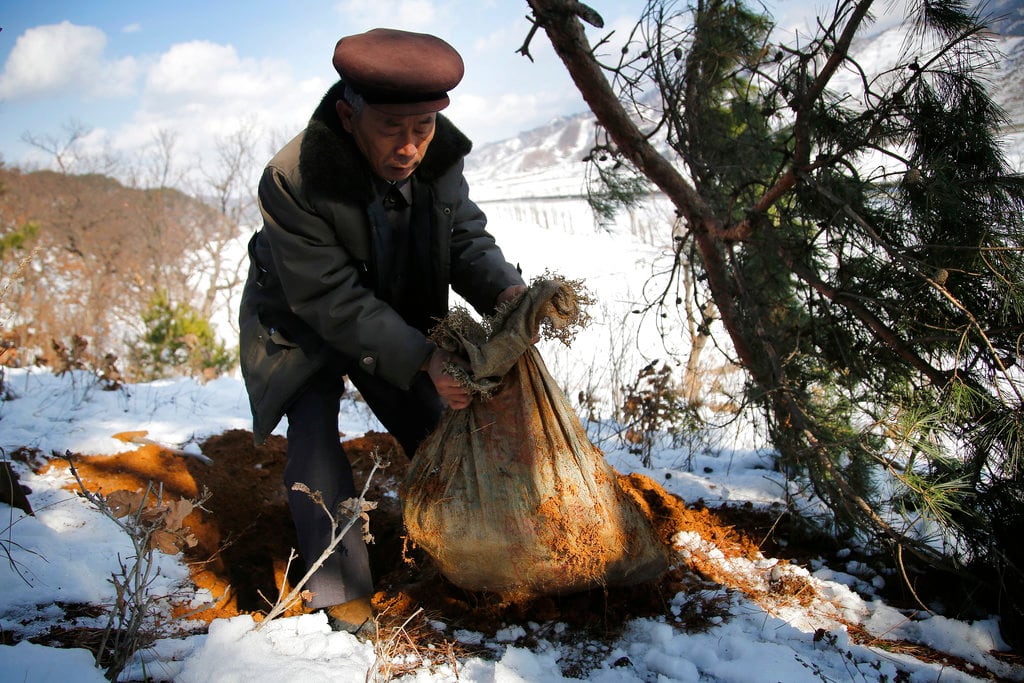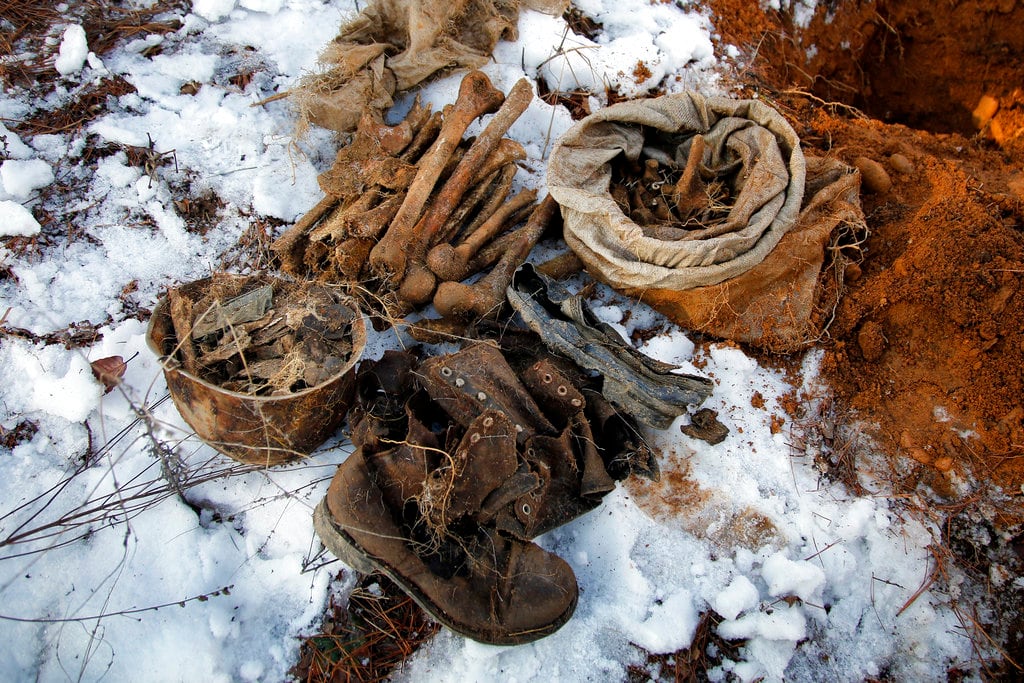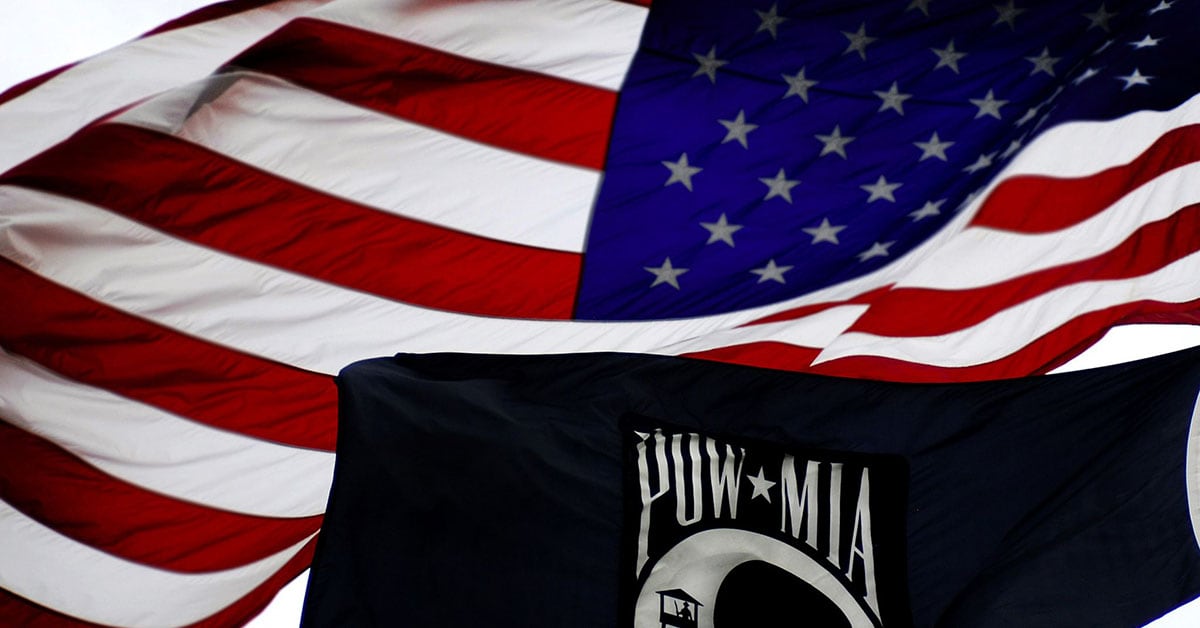TOKYO — More than six decades after the troops died for their country, the repatriation of the remains of thousands of U.S. military personnel missing in action and presumed dead from the Korean War may finally get a boost now that President Donald Trump and North Korean leader Kim Jong Un are expected to hold the first-ever summit between their countries.
Nearly 7,800 U.S. troops remain unaccounted for from the Korean War. About 5,300 were lost in North Korea.
Efforts to recover and return the remains have been stalled for more than a decade because of the North’s development of nuclear weapons and U.S. claims that the safety of recovery teams it sent during the administration of President George W. Bush was not sufficiently guaranteed.
There are indications, however, that Trump may raise the issue directly with Kim when they meet. There is also a chance Kim might return some remains even before the summit. The location and date of the summit have yet to be announced, though officials have suggested the meeting should take place by May.
“Hopefully, the North Koreans will turn over some remains as a goodwill gesture before the summit,” said Bill Richardson, a former U.N. ambassador and New Mexico governor who secured the return of six sets of remains from North Korea in 2007. “This would help enormously to diffuse some tension.”
Frank Metersky, a Korean War veteran and a leading advocate of efforts to recover the remains with Korea Cold War Families of the Missing, one of three main support groups for families of service personnel missing in action, said he has been told by administration officials dealing with the matter that it is tentatively high on the summit agenda.
“The MIA issue, recovery of remains from the Korean War is the third item on the list if they get to it,” he said by phone from New York. “If the meeting takes place and they get past the nuclear and missile issues, it’s the third item on the agenda.”

Trump’s decision to meet Kim has come under criticism amid skepticism over whether he will be able to negotiate a nuclear deal with the North.
An agreement from Kim to return remains or allow future search missions would allow Trump to claim a concrete success. Hopes are high that Kim might also be willing to release three Americans of Korean descent it is now holding in custody for what it calls “anti-state” activities.
According to the Pentagon’s Defense POW/MIA Accounting Agency , most of the missing Americans died in major battles or as prisoners of war. Others died along the wayside or in small villages. Many of the losses from aircraft crashes also occurred near battle zones or roads connecting them.
North Korea and the United States remain technically at war because the 1950-53 fighting ended with an armistice, not a peace treaty. But between 1996 and 2005, joint U.S.-North Korea military search teams conducted 33 joint recovery operations and recovered 229 sets of American remains.
Washington officially broke off the program because it claimed the safety of its searchers was not guaranteed, though the North’s first nuclear test, in 2006, was likely a bigger reason. Critics of the program also argued the North was using the deal to squeeze cash out of Washington, calling it “bones for bucks.”
The total cost to the U.S. to carry out the joint missions was $19.5 million.
Talks to restart recovery work resumed under President Barack Obama in 2011, only to fall apart after North Korea launched a rocket condemned by the U.S. as a banned test of ballistic missile technology. There has been essentially no government-to-government progress since.
Richard Downes, president of the Coalition of Families of Korean and Cold War POW/MIAs, said the North had expressed a willingness to return remains as recently as 2016, when he traveled to Pyongyang as a private citizen with a non-profit headed by Richardson.
“If progress is made, even without the remains issue being raised, windows may open sometime afterward,” he said in an email to The Associated Press.
The passage of time is making recovery efforts more difficult.

In 2016, the AP visited a site about 160 kilometers (100 miles) north of Pyongyang were villagers have buried what they claimed to be dozens of sets of remains that were unearthed during the construction of the Chongchon River No. 10 Hydroelectric Power Station.
The villagers collected the remains that had been dug up, put them in large burlap bags and buried them in three separate places on a nearby hill overlooking a valley that was to be flooded as part of the construction project. Whether the remains are actually of Americans, of course, can’t be determined until they are recovered, separated and probably DNA tested.
But the U.S. government has estimated as many as 270 sets of American remains are likely recoverable in the area, which is now called Kujang County. Searching for them was one of the top priorities when the U.S. missions were still going to North Korea. Nearly a dozen joint searches were conducted in the area from 1998-2000.




